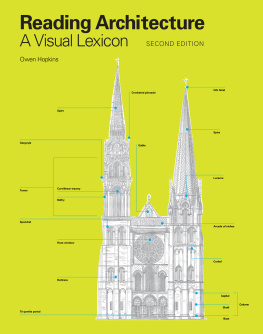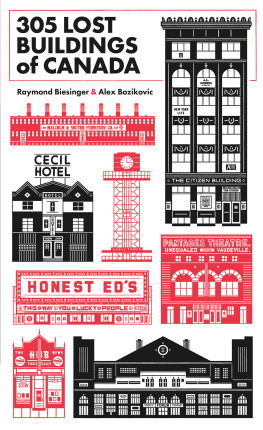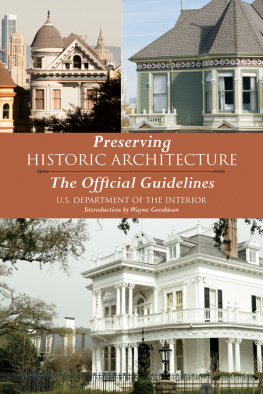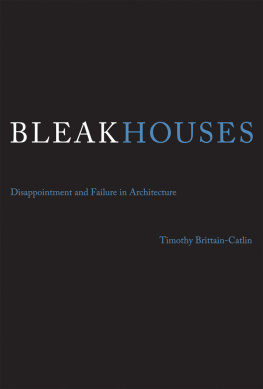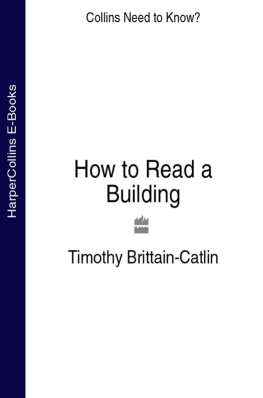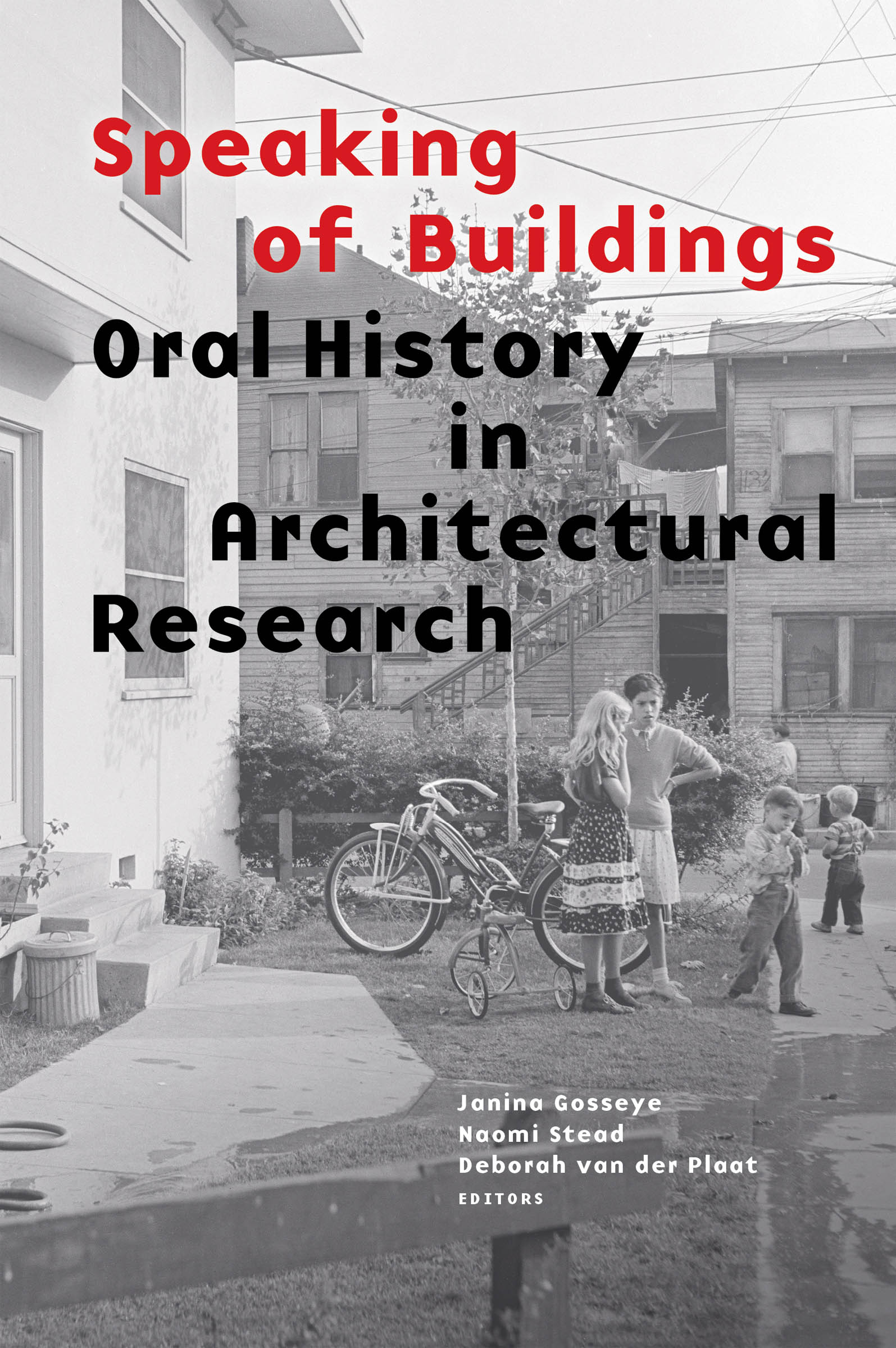

Table of Contents
Janina Gosseye
Jesse Adams Stein and Emma Rowden
Christine Wall
Jessica Kelly
Helena Mattsson and Meike Schalk
Karen Burns
Sandra Parvu and Alice Sotgia
Kelly Greenop
Thomas-Bernard Kenniff
Ceren Krm
Ashley Paine
Igea Troiani
Andrea J. Merrett
Naomi Stead, Deborah van der Plaat, and Janina Gosseye
acknowledgments
A book such as this requires the effort of many people, and there are many individuals and institutions to whom we are very grateful. First and foremost, we would like to thank our contributing authors, who worked willingly and tirelessly through several labor-intensive rounds of editing and through recurring requests for additional information. Without their enthusiastic engagement and belief in this project, this book would not have been possible.
We would also like to acknowledge those who attended and contributed to the various conferences and symposia around the subject of oral history in architectural research that we organized in the lead-up to this book. Most notably we thank the audience and speakers at the symposium Lost in Conversation, which took place at the University of Queensland in Brisbane in November 2013; the speakers and attendees at the Oral History as Method: A History of Diverse Architectural Voices session of the Society of Architectural Historians (SAH) conference in Pasadena in April 2016; and the doctoral students who participated in the oral history tool kit workshop at the Canadian Centre for Architecture (CCA) in Montreal in July 2017. We also thank the audience who had many insightful questions during our public lecture at the CCA during that period. The conversations and discussions at all of these events helped us shape our thoughts, question our assumptions, and refine our research questions.
We would like to thank our academic institutionsthe University of Queensland, Monash University, and ETH Zrichfor giving us the freedom to pursue this project and for providing generous financial support. In particular, the ATCH (Architecture Theory Criticism History) Research Centre at the University of Queensland has, over many years, provided all three of us with a uniquely supportive and stimulating intellectual environment for architectural research, and it has also contributed financially to this book in various ways. The Critical Practices Research Lab in the Faculty of Art, Design and Architecture at Monash University, and the Chair for the History and Theory of Urban Design in the Institute for the History and Theory of Architecture (gta) at ETH Zrich have also financially supported the book. Finally, we thank the Graham Foundation for Advanced Studies in the Fine Arts for both its financial contribution and its publicity support.
Several individuals need to be thanked by name. Professor John Macarthur, founder and former director of the ATCH Research Centre at the University of Queensland, provided both intellectual and institutional support to this project, and to all of our academic careers, over many years. Also under the auspices of the ATCH Research Centre, Carmen Armstrong helped with formulating bibliographies. We thank the staff at Canadian Centre for Architecture for inviting us to run the oral history tool kit workshop in 2017, especially Kim Frster, Giovanna Borassi, and Mirko Zardini. At Monash University we have received financial administration support from Kirsty Davidson and Athena Bangara. We also thank Professor Hilde Heynen at KU Leuven for her assistance with our Graham Foundation funding application.
Finally, we would like to thank our publisher, Princeton Architectural Press, for believing in this project. We express our gratitude to Nolan Boomer, Abby Bussel, Lisa Delgado, Anne Hill, Jennifer Lippert, and Paul Wagner for making the publishing process run so smoothly and efficiently.
This book is dedicated to those who might speak of buildings, but whose voices remain unheard.
INTRODUCTION
A Short History of Silence
the epistemological politics of architectural historiography
Janina Gosseye
Words bring us together, and silence separates us.... Liberation is always in part a storytelling process: breaking stories, breaking silences, making new stories.
Rebecca Solnit, The Mother of All Questions
In The Mother of All Questions, Rebecca Solnit includes a poignant chapter entitled A Short History of Silence. Chronicling stories of exclusion and violence against women, she denounces silence as the ocean of the unsaid, the unspeakable, the repressed, the erased, the unheard. In her book, which carries the subtitle Further Feminisms, Solnit advocates not just for womens rights but also for human rights, for universal equality, for all voices to be heard. She writes:
We know who has, mostly, been heard on the official subjects: who held office, attended university, commanded armies, served as judges and juries, wrote books, and ran empires.... Who has been heard we know.... If libraries hold all the stories that have been told, there are ghost libraries of all the stories that have not. The ghosts outnumber the books by some unimaginably vast sum.
Like Solnits book, Speaking of Buildings feeds on the contemporary social revolution, on the current wave of feminism. Architecture has long been dominated by elites, mostly Western and male, and its historiography has often been dictated by what these individuals have to say about buildings. Speaking of Buildings seeks to open up the conversation, to shed light on those who have been silenced in architectural history or on those who have remained unheard. It offers approaches, methods, and strategies to break this silence, to tell different stories; and provides examples from those who have done so. Sadly, like Solnits latest feminist manifesto, Speaking of Buildings is nothing new. Just as feminists and associated social activists have been striving for equality for the past fifty years, so too have some architectural historians and writers regularly pleaded for and endeavored to write alternative, more inclusive, multifaceted, and polyvocal architectural histories.
A Short History of Silence
Over the past half century, architectural historiography has been punctuated by attempts to break the silence, to tell alternative narratives and to include other voices. From the 1960s, under the influence of post-structuralism, there was a rising interest in subjective experience and the personal in research and academic work.
In architecture in the 1960s and 1970s, this new mode of research resulted in part in the production of biographies of the first generation of women architects who were active during the early modernist period but whose stories had up until then remained largely untold. But other counter-narratives or corrective histories also emerged. An early example is Lived-in Architecture by architectural historian and theorist Philippe Boudon. This book, published in 1969, relied predominantly on the oral accounts of those who lived in Le Corbusiers Pessac housing project (19261930) near Bordeaux. Its aim was to contrast the well-known history of Le Corbusiers Pessac project, which relied chiefly on its architects vision, with the lived-in reality as told by its inhabitants.
Fittingly, Lived-in Architecture
Next page

